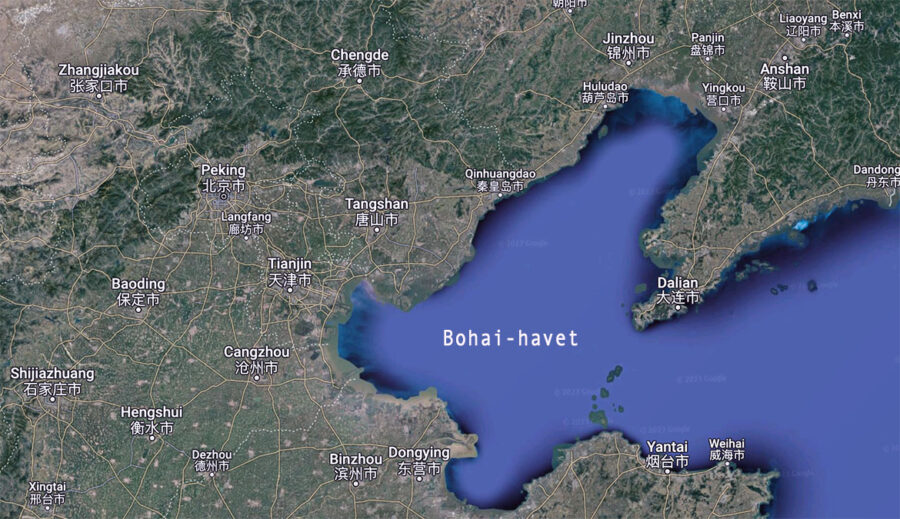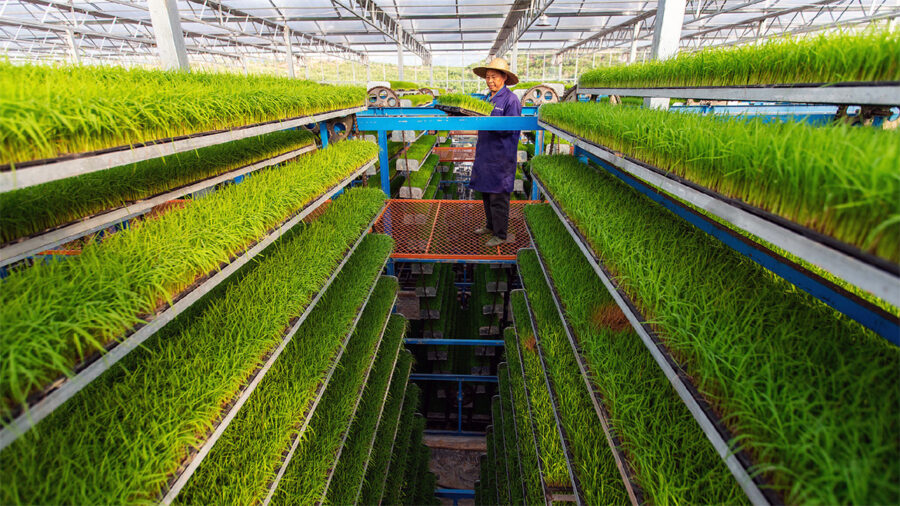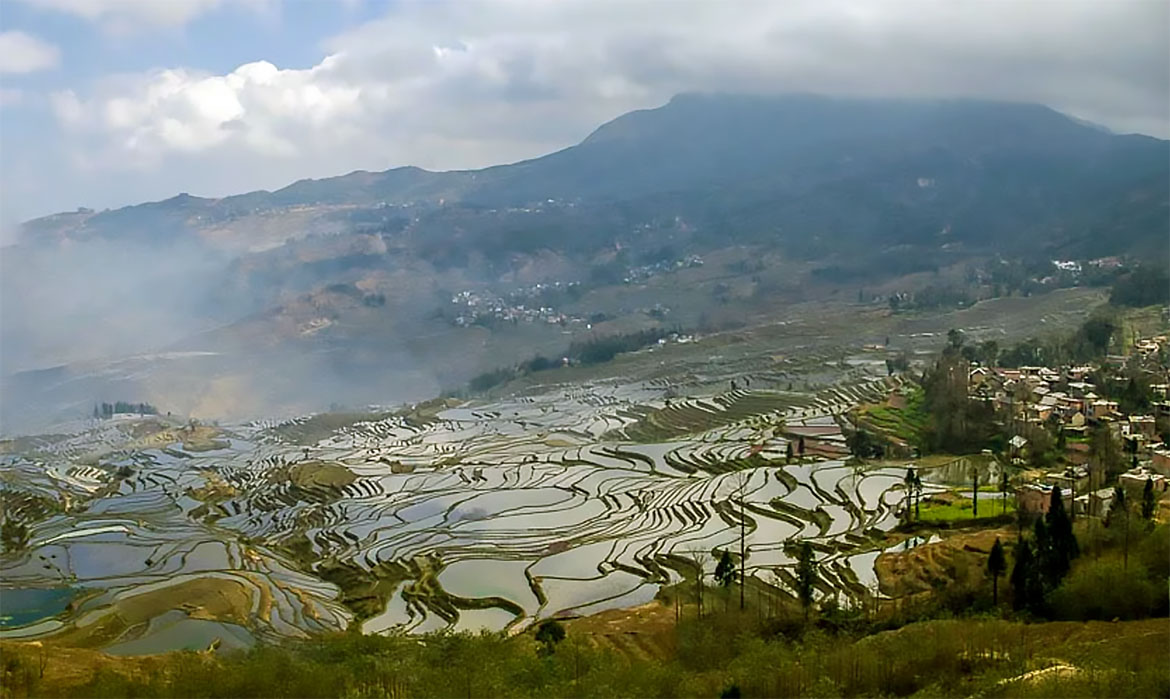The first thing that strikes you when you start researching China’s food production is the massive amount of information that is withheld from the Swedes and the West in general. I have been collecting information, notes, photographs and building databases for much of my life in China. I share here what I have found during my travels in China and through private research.
By Karl Wang
External threats to China’s food production
China has established six ambitious priorities for 2024. Number five on the list is food security. The fact that China is keen to develop its food production is not only related to feeding its population through domestic food supply. It is also about security.
The US and USAID have been revealed to have sent seeds to Syria contaminated with nematodes, parasitic ringworms that destroy crops. The information comes from the Syrian government, which has warned farmers against using this US-sourced seed.
The suppliers claim the seed is of the highest quality, but according to the Syrian government it is harmful, a problem that grows over time as the parasitic worms spread through the soil. The US is willing to ”weaponize” almost anything in its quest for totalitarian power over other countries and their people.
As in Syria, China’s people may face an external threat. Better to manage food production at home.
A history of hunger and starvation
China’s population makes up about 20% of the world’s population, but has only 8.5% of the world’s farmland, according to the China Agricultural Development Report, 2016. That means 4,046 square meters for each large family.
How do you manage that in China? The simple answer is that you don’t always.
China has a history of famine and starvation. The most famous in the West is the Great Leap Forward between 1958 and 1962. We don’t know how many people died. Guesses are wild, to say the least, and range from 15 to 55 million. My educated guess is 20 million. There were also several famines during ’democracy’ in China between 1913 and 1949.
The underlying causes that led to the Great Leap Famine were several, but the root cause was malnutrition due to the weather. It was made much worse by corruption and administrative mismanagement. Peasants were put to work in ’blast furnaces’, which only produced useless metal products, instead of allowing them to farm.
Another reason was the organization of collective farming, which meant that everyone thought someone else should do the farming.
China’s answer is innovation, technology, collaboration, coordination, cooperation and organization. It is steering away from the competitive market practices of the West, which it sees as destructive and exploitative.
Competition in China is to be better than others. Competition in the US is to find ways to destroy and harm everyone else and prevent the development of others, as we see in US propaganda about Xinjiang, Tibet, or Hong Kong, for example. The US spreads false rumours to defame, discourage and harm others.
Early technology
Early technology is the famous rice terraces. Two well-known sites are Longji, the Dragon’s Back, near Guilin in central China. Another lesser-known but more spectacular site is Yuanyang, located in Yunnan on the border with Vietnam. It is home to the Hani people.
I visited Yuanyang in 2014 and there are no big hotels here, only local investment. The floor of the hotel room wobbles a bit and creaks loudly and the carpenter must have lost the angle hook, but everything is personal and like visiting a home.

The Hani people have enjoyed self-government since the 14th century, including during the imperial era, and are one of the very few places in China that have never been ravaged by war. The emperor called the Hani people ”the sculptors of the mountains.” The people are open, and welcoming and the food is delicious.
The scenery is spectacular, to say the least. They had no written language of their own, everything is passed down through oral tradition. When Beijing created a written language, similar to Vietnamese, the older people were furious. ”We have managed for thousands of years without it, and now the ’foreigners’ from Beijing are coming to interfere,” they said.
The rice terraces are still cultivated with oxen. I asked why they still use oxen and not machines. The farmer snorted:
”Machines cost money to buy, money to run, they break down, destroy the rice fields and are just in the way when you don’t use them. Thanks to oxen, they are reliable”.
Greenhouses in China
Another long-standing development in China is large greenhouses. China plans to build 20 billion square meters of greenhouses by 2025. Some are so large that they cover several square kilometres.
The microclimate inside the greenhouses is AI-regulated; carbon dioxide is introduced into the greenhouses. Carbon dioxide is a pollutant from fossil fuel power plants, so the crops in the greenhouse do not need artificial fertilizers or spraying for insect pests. Greenhouses are a closed volume where pests do not enter. No poison spraying is needed.
In Tibet, large solar installations have been built and the electricity is used to heat the soil to benefit the vegetation. Large areas that were previously uncultivable can then be used for cultivation.
Miracle rice
Rice has always been a staple in China. The rice plant is believed to have originated in southern China and the Yangtze River region, where it was first cultivated 8,000 to 9,000 years ago. That development has never stopped in China.
China’s super rice, also known as miracle rice or hybrid rice, was developed by the late agronomist and scientist Yuan Longping. He died on May 22, 2021, at the age of 91 after spending his entire life working to improve the crop. He is one of China’s national heroes.

Born in 1930, the spark for development was the famine disaster of the Great Leap Forward. He started his life’s work, developing more productive rice varieties to produce more food, around 1960. In the past, 300 to 500 kg of rice was produced per Mu. A Mu is about 666 square meters. In 2014, the same area produced about 15 tons, 30 times more.
Growing in saltwater
Especially in Xinjiang around the deserts, the water is salty and almost nothing grows naturally. So China developed a type of rice that can grow in salty water and it is estimated that it could feed around 80 million people.
China also has inland seas, such as the Bohai Sea 渤海, which is connected to the Yellow Sea and thus similar to the Baltic Sea. The water is therefore brackish, and salty and cannot normally be used for irrigation, but the hardy saltwater rice can be used.

Today, rice is also grown in the salt deserts of Xinjiang using advanced technology.
Xinjiang also recently reported a technological breakthrough in growing food in seawater. The Chinese are also farming freshwater fish, king prawns, ocean fish and lobsters on the edge of the Xinjiang desert. At the same time, they have developed methods to grow fish and clams in rice fields when the rice is underwater.
Vertical automated high-rise farms
Technology has also taken over other functions in agriculture. US propaganda constantly makes false claims about forced labour in Xinjiang, claiming that local people are forced to work in the cotton fields. The reality is that cotton is now harvested mechanically by harvesting machines that don’t even need a driver. Computers and satellites control them.

When tea leaves are harvested in the mountains, they are no longer carried down to the tea farms in the valleys. The tea harvest is loaded using autonomous computer- and satellite-controlled drones that fly the tea down. Previously huge and time-consuming efforts are being replaced by modern Chinese technology.
Even fertilizing and spraying are now done with drones that are AI-controlled by computers and satellites. They work 80 times faster than traditional methods and are very precise. Exactly the right dose of fertilizer or spray is applied, which benefits the environment and the climate.
In December 2023, the Chinese launched China’s first fully automated and unmanned vegetable farm, greenhouse and factory in Chengdu. Almost all conventional farming is done horizontally, on a flat surface like a field.
This one, however, is grown at height, like in a high-rise building, and produces a 36-day harvest of lettuce in 20 floors. In other words, agriculture has been moved into the city and the crop has been placed on the edge. It works fully automatically and is completely independent of the climate and what it produces in its own fully AI-controlled environment.
Vertical farms are seen as an important way to bring enough food to dry and urban parts of China, i.e. automated facilities that provide year-round harvests. This allows such a farm to produce food anywhere, regardless of the climate, such as in the middle of a big city, or a desert.
Meat is produced in high-rise buildings
Pork is another staple in China. China has also built pig farms in the form of 26-storey high-rise buildings in places like Ezhou in Hubei province, which will be able to produce 1.2 million adult pigs per year. China also has large emergency stocks of frozen pork.
From scarcity and hunger to abundance and prosperity
Listening to Professor Keiyu Jin’s TED talk, we understand how far China has come. She was born in the 1980s when China was a country in distress and short of everything. Food was rationed and came from municipal ’soup kitchens’. People read by candlelight. 40 years later, China is a country of prosperity and abundance, especially in terms of technology.
The people of China built this country all by themselves into what it is today. Sure, they have learned a lot from others, perhaps especially Korea, but also from Europe, the United States and Japan, but in the end it was the Chinese people who built China into what it is today by their efforts.
This is despite the US propaganda that tries to claim that learning is the same as stealing.
We should remember in this context that the development and prosperity of the West are based on China’s inventions such as paper, the rudder, shipbuilding, the compass, printing, the blast furnace, steel production, paper money, hydraulics, the fork, the harness, noodles, silk, locks, the abacus, the crossbow, the calendar, the dry dock, porcelain, the saw, the scissors, tea, vaccination, the wheelbarrow, the crank, the astronomical clock, the windmill, and many thousands of other Chinese inventions.
Almost everything I have written in this article comes from my knowledge, experience and my databases. I tried to create a list of sources and references, but it soon became far too extensive and unwieldy. The list soon became longer than the article.
By Karl Wang
Related
- Karl Wang: Kina leder den innovativa utvecklingen för järnvägsinfrastruktur och supertåg
- SCMP (24 dec 2023): China vaults salt with saline-tolerant crops, increasing yields and advancing food security goals
References
- Wikipedia: List of Chinese inventions
- South China Morning Post: From outer space to seven seas, China has 6 ambitious priorities as Beijing plots economic recovery in 2024
- China Global Television Network (CGTN): On the Belt & Road: China building world’s largest greenhouses for Egypt
- Next Big Future: $500 Billion to Bring All World Crop Farming Indoors
- 歪果仁研究协会 Ychina: What I saw in Xinjiang working as a Cotton Farmer
- CGTN: Foreign blogger Raz Galor visits cotton farm in Xinjiang

